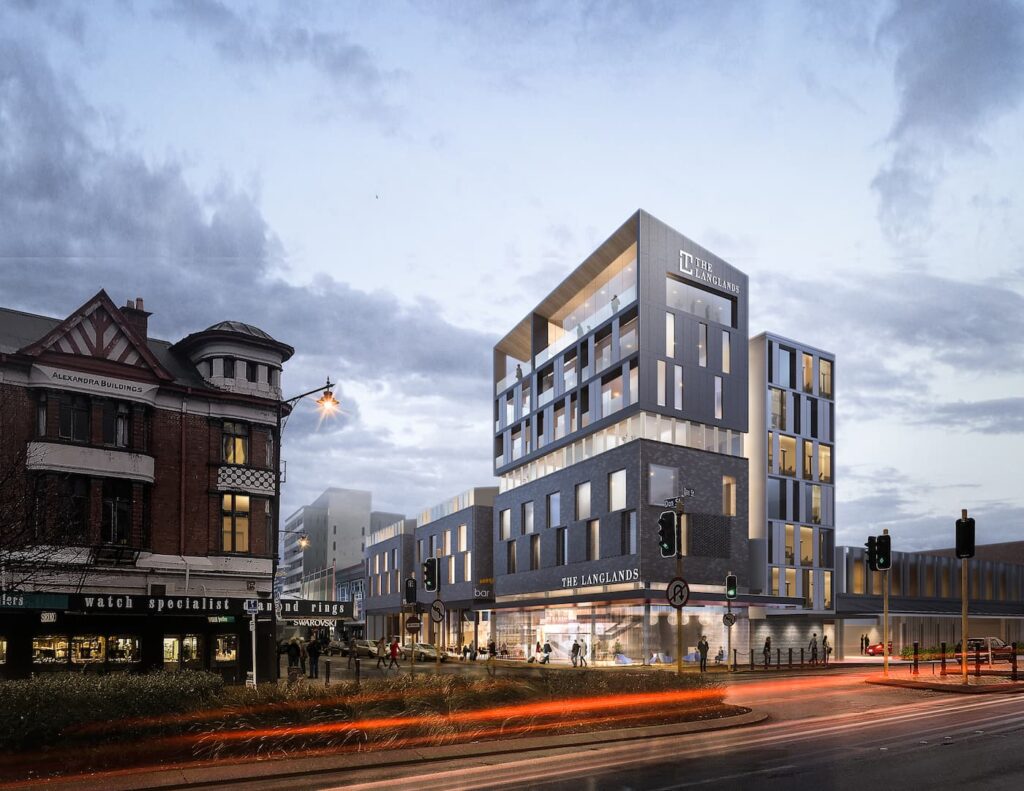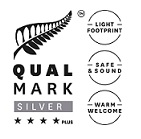What's in a name?

The hotel takes its name from the original land owner William Langlands.
In 1861, around the time that Invercargill was being established the entire block, along Dee Street was granted to him from the crown.
William Langlands was born near Edinburgh, Scotland in 1817. He arrived at Port Chalmers in 1850 with his wife Alison and family on the ship ‘’Eden”.
He settled in Otago and had a varied career as a draughtsman, an engineer and a prominent Otago politician. He was promoted to provincial engineer and architect for Otago.
Mr Langlands never resided in Invercargill but saw new opportunities in land acquisition and development.
As was typical of that era, he commissioned one architect Frederick W Burwell to design various commercial buildings through the mid-1800s in what was to become the Langlands Block.
A hub of commercial activity
Prior to 1856, the land where The Langlands now proudly sits was depicted both in and outside the bush line on the town maps.
This area was surrounded by bush and water, which is hard to imagine now as we sit in the Invercargill inner city.
This site was originally home to five different properties, three of which were pre-1900 buildings. The most well-known of these was the Rout’s Building or T&G Building. Built between 1884 and 1885 when the Langlands Block was constructed, it formed the cornerstone building of what was to become a prominent corner and the main thoroughfare for Invercargill.
The Rout’s Building remained on the site until demolition began in 2019. At a glance, the exterior was authentic to the era of the build, although it received major renovations in 1936 with an art deco inspired redesign. This saw the addition of a verandah, new sashes above the veranda, and reeded decoration around the windows
Over the years it had major internal reconfiguration to adapt to the changing commercial needs of the tenants. It has been home to drapers, chemists, tailors, grocers and watchmakers, and more recently it was a retail shop for a phone company and home to a cafe.
The other two pre-1900 buildings were gone well before The Langlands hotel was first mooted. The Leviathan Gift Shop and Sloan’s Building.
At one point a shoe/boot manufacturer called, ‘Red Boots’ operated from the site. We wonder if this is where the famous red shoes from Southland Girls High School originated?
During the 1880s and 1890s, the street directory for these building included seedsmen, fruiterers, bootmakers, a bookseller, a hairdresser and a restaurant.


Did you know?
The Langlands is not the first hotel to operate from this block.
The Imperial Hotel proudly opened 1 January 1879. It was described as “lofty and commodious”, with 30 rooms, plus a dining-room, billiard-room, sitting-rooms and bar.
With design features that included square towers, campanile roofs, lunettes, coupled columns, vases and balustrades.
It would appear that this area has always been considered a prime location!
All that remains
Following demolition, a thorough archaeological examination of the site was carried out by New Zealand Heritage Properties Limited.
During the earthworks, several ceramic and metal artefacts and glass artefacts were found.
No Toanga or Maori artefacts were discovered.
Some features were unable to be removed and will forever remain part of solid foundations of the site. This includes the basement foundation walls of the pre-1900 building and two possible latrine features.

A nod to the past
Architects Warren and Mahoney have created a contemporary design that is a nod to the past.
The lower half of the external cladding has a brick-like facade similar to the era of the time. The upper floors have a more modern look, designed as a lantern that hovers over the fabric of the city.
The Hotel’s interior is a subtle representations of a time gone by. Delicate features have been repurposed and their story is now interwoven with The Langlands.


